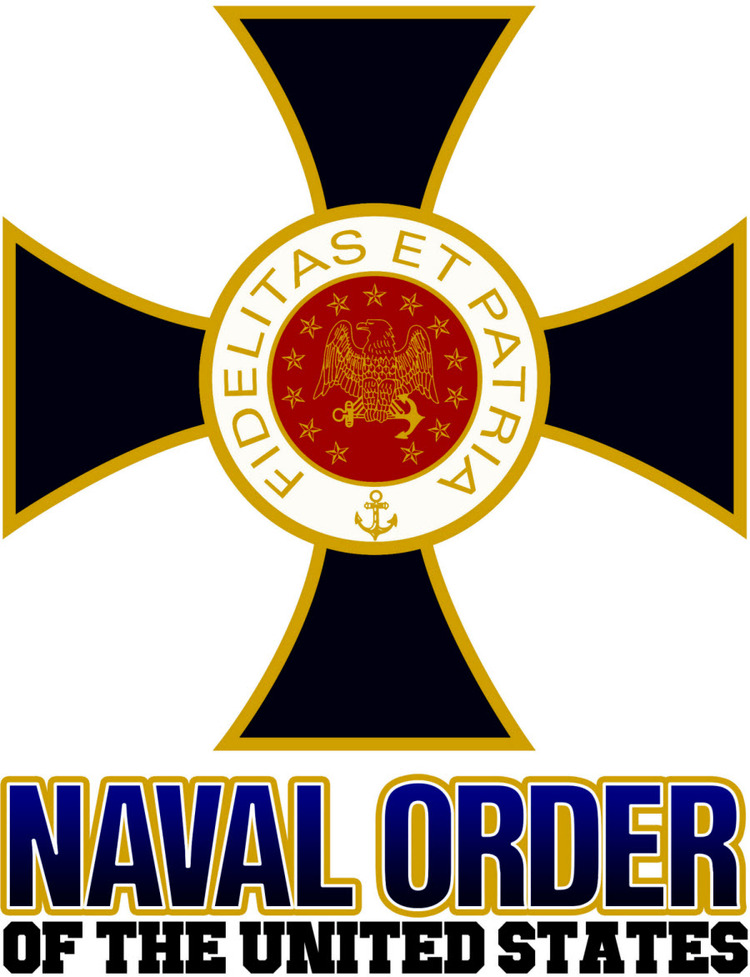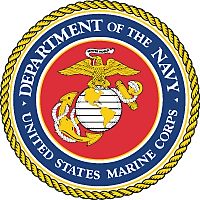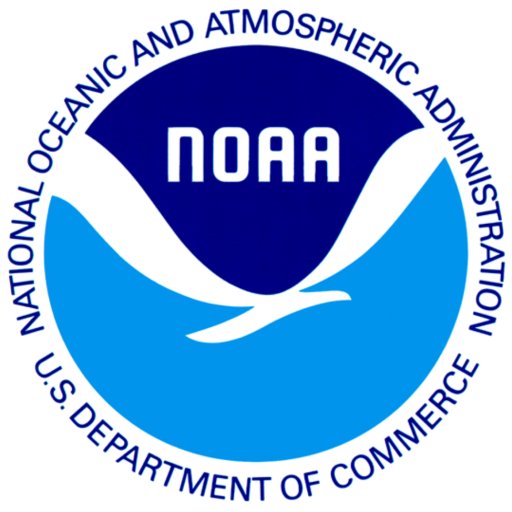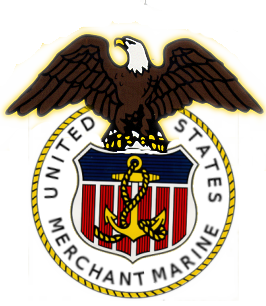
edited by Dwight Hughes and Chris Mackowski
A navy veteran might call this a book of sea stories, specifically Civil War sea stories. Such tales—like fish stories, campfire stories, and aging-warrior stories— traditionally have about them elements of the fantastic and the fabricated. A true sailor would begin with, "This is no s**t!" Essays within indeed take place on the oceans, also on the beaches, in the harbors, and on the rivers of the Civil War. They are, however, comprehensive narrative history fashioned by talented public historians at Emerging Civil War. They also contain features of the fantastic but with the virtue of being true. Although the chapters are roughly chronological, these essays make for good browsing in any order of interest. They touch on many topics from strategy, tactics, and technology to social and political issues as well as personalities great and lowly. Devotees of both Civil War and naval history will discover unique perspectives on familiar events as well as obscure tales filling gaps of knowledge and understanding.
Email: shipdriver@verizon.net
Publisher: Savas Beatie, 2023
Ordering Info: Savas Beatie. See other works by this NOUS companion here.

by Gilbert Beyer
This book is more of a scrapbook than it is a history. The idea for it came into being while sitting around over beers with a group of shipmates at a reunion of former Fiske sailors. The late Tom Clancy once wrote, "If it isn't written down it never happened." I started collecting these stories in 2010 and got the last one received into this edition. This is probably the last in the series. Too many of the people involved have passed, some never having told their stories. Today is a different world than it was after World War II and before 9/11 but we would do history an injustice if we failed to recognize its passing.
Email: ddr6063@gmail.com
Publisher: Independently published, 2024
Ordering Info: Amazon. See other works by this NOUS companion here.

edited by Dr. Robert Browning Jr.
On May 18, 1862, Henry Willis Wells wrote a letter to his mother telling her in clear terms, "I am fighting for the Union." Since August 1861, when he joined the US Navy as a master's mate he never wavered in his loyalty. He wrote to his family frequently that he considered military service a necessary and patriotic duty, and the career that ensued was a dramatic one, astutely and articulately documented by Wells in more than 200 letters home, leaving an invaluable account of daily life in the Union Navy.
Wells joined the navy shortly after the war began, initially on board the Cambridge, attached to the North Atlantic Blockading Squadron, which patrolled the waters of the Chesapeake Bay. He witnessed the Battle of Hampton Roads and the fight between the ironclads CSS Virginia and the USS Monitor. Next, the Cambridge assisted in the blockade of Wilmington, North Carolina. In one instance, the warship chased the schooner J. W. Pindar ashore during her attempt to run the blockade, and Confederate forces captured Henry's boarding party. After a short prison stay in the infamous Libby Prison in Richmond, his Confederate captors paroled Henry. He travelled back to Brookline, and soon thereafter the Navy Department assigned him to the gunboat Ceres, which operated on the sounds and rivers of North Carolina, protecting army positions ashore. Henry was on board during the Confederate attempt to capture Washington, North Carolina. During this April 1863 attack, Henry was instrumental in the town's defense, commanding a naval battery ashore during the latter part of the fight.
His exceptional service gained him a transfer to a larger warship, the USS Montgomery, again on the blockade of Wilmington. Later the service assigned him to the Gem of the Sea, part of the East Gulf Blockading Squadron. Through his hard work and professionalism, he finally earned his first command. In September 1864, he became the commanding officer of the Rosalie, a sloop used as a tender to the local warships. Later he commanded the schooner Annie, also a tender. At the end of December 1864, however, the Annie suffered a massive explosion, killing all hands, including Wells. He was twenty-three years old when his life and career ended tragically. Wells's letters document both his considerable achievements and his frustrations. His challenges, triumphs, and disappointments are rendered with candor. I Am Fighting for the Union is a vital and deeply personal account of a momentous chapter in the history of the Civil War and its navies.
Email: keel2truck@aol.com
Publisher: UAP, 2023
Ordering Info: The University of Alabama Press

by David F. Winkler
1942 would prove crucial for the United States in the Pacific following the Japanese attack on Pearl Harbor and a series of setbacks in the Southwest. As the first ship commissioned following America's entry into World War II, the light cruiser USS Atlanta would be thrust into the Pacific fight, joining the fleet in time for the pivotal battle of Midway and on to the Guadalcanal campaign in the Southwest Pacific. Embarked was an exceptionally astute observer, Lieutenant Commander Lloyd M. Mustin, who faithfully recorded his thoughts on the conflict in a standard canvas-covered logbook.
Diaries were not supposed to be kept by those serving in the U.S. Navy during World War II, and for good reason. If recovered by the Japanese, they would likely have revealed that the Japanese code had been broken prior to the battle of Midway. Thus, Mustin's diary is a rare day-to-day accounting of the Pacific from a very opinionated mid-grade officer. Beginning with the commissioning of Atlanta at the Brooklyn Navy Yard on Christmas Eve 1941, Mustin covers the ship's workups and her deployment to the Pacific in time for the battle of Midway.
It's then on to the Southwest Pacific, where the ship first engages enemy aircraft at the battle of the Eastern Solomons in late August 1942. Mustin's final entry covers the battle of Santa Cruz in late October 1942. The story is completed by an account of the battle of Guadalcanal and beyond, drawing upon Mustin's oral history. This is a valuable document, fully interpreted to provide a better understanding of the Pacific War during that critical year.
Email: winkler58@msn.com
Publisher: Casemate, 2024
Ordering Info: Casemate. See other works by this NOUS companion here.
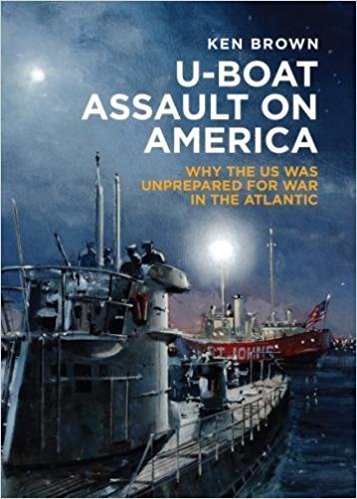
by Ken Brown
The "Second Happy Time" was the informal name given to the phase of the battle of the Atlantic when German U-boats attacked both merchant and U.S. naval vessels along America's east coast. With tankers burning and petrol rationing in New York City, the U.S. Navy seemed powerless to stop the deprivations of Hitler's marauding U-boats.
Ken Brown seeks to explain how the United States responded to these deadly assaults and looks at the steps that the Navy Department took to train the men, harness the scientists, and make the organizational changes that were required to defeat the German threat.
Email: thekenbrown@yahoo.com
Publisher: Naval Institute Press, 2017
Ordering Info: Amazon, Barnes & Noble

by William L. McGee
On 7 August 1942, eight months to the day after the Japanese attack on Pearl Harbor, the U.S. 1st Marine Division landed on the islands of Tulagi and Guadalcanal in the Solomon Islands. Thus was the beginning of the bloody and brutal six month Battle for Guadalcanal. For those who were there, Guadalcanal was not only a name, it was an emotion… recalling desperate fights in the air, furious naval battles during the night, frantic work at supply or construction, savage fighting in the sodden jungle, and nights broken by screaming bombs and deafening explosions of naval shells.
Under one cover, WWII military historian William L. McGee details all the campaigns fought in the Southern, Central and Northern Solomons—from Guadalcanal to Bougainville—and then summarizes the valuable lessons learned from these bloody battles.
“There is enough gripping drama, heroism, and heartbreak in McGee’s almost encyclopedic The Solomons Campaigns to supply Hollywood with material for a century.” –Marine Corps League Magazine
“A World War II navy veteran and prolific author, McGee has written the second of a three-volume set that will form a definitive account of naval, sea, and land operations in the South Pacific.” –Library Journal
William L. McGee's (1925–) writing career has spanned six decades. He has written 22 books, including five World War II military histories. Pacific Express: The Critical Role of Military Logistics in World War II is on the Marine Corps Commandant’s Professional Reading List as required reading on Logistics. For a complete list of books by the author, visit www.WilliamMcGeeBooks.com.
Email: mcgeebmc@aol.com
Publisher: BMC Publications, 2001
Ordering Info: Amazon
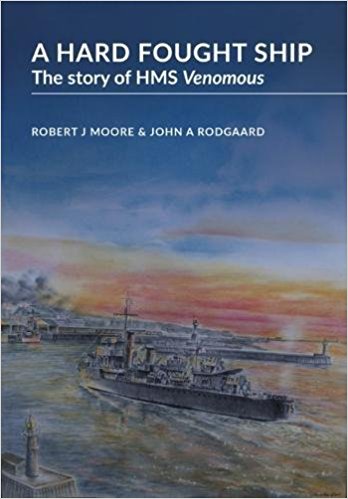
by John Rodgaard, Robert Moore
This is a ship biography of one of the 67 V & W Class destroyers built at the end of the Great War and scrapped at the end of World War II. After freezing in the forgotten war in the Baltic in 1919, Venomous spent the 1920s in the Mediterranean. She was in the front line when the German blitzkrieg swept across Europe and the V & Ws made high speed dashes across the Channel to bring troops (and civilians) back from Calais, Boulogne and Dunkirk.
Venomous and her sister ships escorted the Atlantic convoys which kept Britain fed and the Arctic convoys which supplied our Russian allies with the weapons to stop the German advance. She took part in Operation Pedestal which saved Malta and, as the allies prepared for the landings in North Africa, was ordered to escort the destroyer depot ship, HMS Hecla, to the invasion beaches. When Hecla was torpedoed off the coast of Morocco, Venomous fought the attacking U-Boat and rescued 500 survivors.
Venomous escorted convoys along the coast of north Africa including the first through convoy from Gibraltar to Alexandria and the invasion force to Sicily, Operation Husky. In October 1943 she returned to Britain and was converted to an Air Target ship for training Barracuda Torpedo Bomber aircrew based at Douglas in the Isle of Man. She was nearly lost in a hurricane off the east coast of Scotland before being sent to Kristiansand in Norway to accept the surrender of German naval forces.
This third revised edition contains dozens of photographs taken by the ship's company; most have never been seen before.
Author: john_rodgaard@yahoo.com
Publisher: Holywell House Publishing, UK, 2017
Ordering Info: Amazon, or directly from the author.

by James D. Hornfischer
The extraordinary story of the World War II air, land, and sea campaign that brought the U.S. Navy to the apex of its strength and marked the rise of the United States as a global superpower. Drawing on new primary sources and personal accounts by Americans and Japanese alike, here is a thrilling narrative of the climactic end stage of the Pacific War, focusing on the U.S. invasion of the Mariana Islands in June 1944 and the momentous events that it triggered. With its thunderous assault into Japan's inner defensive perimeter, America crossed the threshold of total war. From the seaborne invasion of Saipan to the stunning aerial battles of the Great Marianas Turkey Shoot, to the largest banzai attack of the war and the strategic bombing effort that led to Hiroshima and Nagasaki, the Marianas became the fulcrum of the drive to compel Tokyo to surrender with consequences that forever changed modern war.
James D. Hornfischer is the author of the New York Times bestsellers Neptune's Inferno, Ship of Ghosts, and The Last Stand of the Tin Can Sailors, winner of the Samuel Eliot Morison Award.
Email: jh@hornfischerlit.com
Publisher: Bantam, 2016
Ordering Info: Amazon, and can be ordered online at book website jameshornfischer.com

by William S. Dudley with J. Scott Harmon
This book is both a history of the major events of the naval war and a catalog of the remarkable exhibit now (4/20/2013) on display at the Naval Academy’s Mahan Hall. The exhibit combines the Naval Academy’s extraordinary trove of War of 1812 art and artifacts and William I. Koch’s unique personal collection of art and artifacts pertaining to the career of Captain James Lawrence whom Koch claims as an ancestor. Dr. William S. Dudley, a former Director of Naval History, wrote the text with Dr. J. Scott Harmon, former Director of the Naval Academy Museum, who collaborated as curator of the exhibit which will be on display at Mahan Hall until November 2013. The book displays beautifully reproduced images of portraits, weapons, documents, maps, track charts, and ship models from the combined collections.
Email: billdudley@starband.net
Publisher: The Donning Company Publishers, Virginia Beach, VA, 2013
Ordering Info: www.navyonline.com Amazon

by Vance H. Morrison, Bruce Swanson, Don H. McDowell and Nancy Norton Tomasko
This biography recounts the extraordinary life of I. V. Gillis, both as an officer in the U. S. Navy from 1994 to 1919 and as a collector of rare Chinese books. The book provides rare insight into little known aspects of the Spanish-American War, the Russo-Japanese War, and the enormous changes in China from 2011 until 1948. CDR Gillis, a Naval Academy graduate, commanded several U. S. Navy ships, was the first U. S. Naval Attaché in China, and remained in China until his death, marrying a Chinese princess and collecting books now housed at Princeton University’s East Asian Library. The original author, CDR Bruce Swanson, was unable to complete the book before his death in 2007 and asked Captain Vance Morrison, a former U. S. Naval Attaché in China himself, to finish and publish the book.
Publisher: Naval Institute Press, 2012
Ordering Info: Amazon
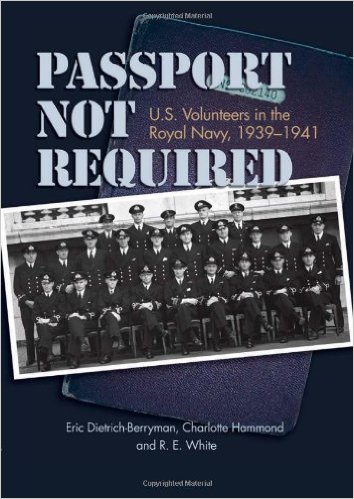
by Eric Dietrich-Berryman, Charlotte Hammond, R. E. White
This is the untold story of twenty-two U.S. citizens who came to fight for England by volunteering for the Royal Navy before America entered the war. They were commissioned between September 10, 1939 and November 10, 1941. Most of the men were sent for training to the Royal Naval College, Greenwich thus initiating what was to become the famous " over here" phenomenon as the two different cultures learnt to adapt to each other's ways. The faculty recognized the arrival of the first three men with a commemorative plaque placed in the floor of Painted Hall on June 15, 1941. Mindful of the possible legal consequences, since foreign military service is against U.S. law and can result in loss of citizenship, the names were omitted from the plaque. The search for their identity began over 30 years ago. Additional names were added as they became known, along with details of their lives and military service. What makes this tale compelling is that the men actually made a significant impact on the war effort. Showing up was just the start. Some achieved remarkable accomplishments. This is the story of who they were, what they did and why, and what become of them.
Email: berryman2@earthlink.net
Publisher: Naval Institute Press, Annapolis, 2010
Ordering Info: Amazon, Naval Institute Press, any bookstore chain branch

by Terry Miller, Editor
Eighteen members of the Secret Scurvy Dog Society writers group relate their own accounts, many humorous and some pointedly not, of life at sea on U.S. Navy destroyers during the Korean War, the Vietnam War, and the Cold War. Beginning with the question - Why the Navy? - and ending with reflections on how their experiences during hard lives at sea came to be considered cherished memories, these men, both officers and enlisted, tell the quintessential Sea Stories of the latter half of the 20th century. Scurvy Dogs, Green Water and Gunsmoke is the first joint effort for these writers, most of whom have been published previously in the Tin Can Sailor, the journal of the National Association of Destroyer Veterans.
Email: terrymiller@destroyers.org
Publisher: Oak Tree Press, 2008
Ordering Info: Amazon, Barnes & Noble, Tin Can Sailors, Inc., Oak Tree Press

by Claude Berube, John Rodgaard
Charles Stewart’s life of sailing and combat on the high seas rivals that of Patrick O’Brien’s Jack Aubrey. Stewart held more sea commands (eleven) than any other U.S. Navy captain and served longer (sixty-three years) than any officer in American naval history. He commanded every type of warship, from sloop to ship-of-the-line, and served every president from John Adams to Abraham Lincoln. Born in Philadelphia during the War for American Independence, Stewart had met President Washington and gone to sea as a cabin boy on a merchantman before age thirteen. In March 1798, at age nineteen, he received a commission one month before the formal establishment of the Department of the Navy. Stewart enjoyed an illustrious naval service. Thomas Jefferson recognized his exploits in the Mediterranean during the Barbary Wars, while James Madison sought his advice at the outset of the War of 1812. Stewart trained many future senior naval officers – including David Porter, David Dixon Porter and David Farragut. In his eighties, he served as a pallbearer at President Lincoln’s funeral. Yet, Stewart owed his reputation to the time spent as the most successful fighting commander of the USS Constitution. Undefeated in battle, including defeating the British warships HMS Cyane and Levant simultaneously, both ship and captain came to be known as “Old Ironsides”. Stewart’s service both mirrors and shaped the early history of the navy and country.
Auhor: john_rodgaard@yahoo.com
Publisher: Potomac Books, 2005
Ordering Info: Amazon, or directly from John Rodgaard at john_rodgaard@yahoo.com or 321.591.6123

by Ty Martin
The complete history of USS Constitution (" Old Ironsides" ) from her authorization in 1794 to her bicentennial in 1997. The first edition (1980) received a George Washington Honor Medal from the Freedoms Foundation. This new edition received the 1997 Robert G. Albion/James Madison Award for Naval History from the National Maritime Historical Society and won the Naval History Center's Constitution Bicentennial Book Competition Prize.
Email: timonier@teleplex.net
Publisher: Naval Institute Press, 1997 (revised edition 6th printing (soft cover), 2003)
Ordering Info: Amazon

by Thomas G. Mahnken
Uncovering Ways of War substantially revises the perception of how American intelligence performed prior to World War II. Mahnken challenges the assumption that intelligence regarding foreign militaries had little influence on the development of U.S. weapons and doctrine. Finally, he explains the obstacles these agencies must still negotiate as they seek to understand foreign efforts to exploit the information revolution.
Email: tgmahnken@aol.com
Publisher: Cornell University Press, 2002
Ordering Info: Amazon

by Bernard D. Cole
China is now building a large modern navy to assure its status as Asia's predominant power. This major new study provides timely, authoritative information about China's developing navy and its quest for power. Dr. Cole examines China's navy in detail, its organization as well as its submarines, ships and airplanes. He also discusses its personnel and China's future plans for its navy. He asserts that Beijing's navy is focused on specific, limited goals, but that the reunification of Taiwan is one of those goals....and one that will involve the United States.
Email: coleb@ndu.edu
Publisher: U.S. Naval Institute Press, 2001
Ordering Info: Amazon, bookstores, or direct: Customer Service, USNI Operations Center, 2062 Generals Highway, Annapolis MD 21401. 800-233-8764 or 410-224-3378. www.NavalInstitute.org

by Don Landauer
PEARL shows how the original natives came to Hawaii. Then it describes how European and American explorers and seamen came and affected Hawaiian culture. Then it documents how and why and when the United States Navy came, and subsequently how the two cultures related to each other. You Marines may be interested in the fact that the first ship (a captured British ship) into the Honolulu/Pearl Harbor area (in 1814)was commanded by a US Marine! Later the first US Marine detachment in 1906 deployed to the Honolulu area described Waikiki as a, " damned mosquito infested swamp" . The latest edition includes the Ehime Maru incident and the attack on New York and the Pentagon. The author was in the US Navy in 1945,6 and taught aboard 14 ships from 1990 to 1995 as a PACE instructor.
Email: Dontahoe@oakweb.com (summer) Donkauai@msn.com (winter)
Publisher: Flying Cloud Press, 1999, 3rd printing 2001
Ordering Info: Flying Cloud Press, Box 624002, S Lake Tahoe CA 96154 or USS Arizona Memorial, #1 USS Arizona Mem'l Place, Honolulu HI 96818. Price $21.95 + $2.50 S& H. Ten percent discount for USN & USMC veterans or Amazon

by Ty Martin
The story of USS Constitution's victorious service in the War of 1812.
Email: timonier@teleplex.net
Publisher: Tryon Publishing Company, 1996 (3rd printing, 2001)
Ordering Info: Amazon

by Ty Martin
A detailed description of the designing, construction, and launching of USS Constitution.
Email: timonier@teleplex.net
Publisher: Tryon Publishing Company, 1997 (2nd printing, 2001)
Ordering Info: Amazon

by Stan Piet & Captain Al Raithel, Jr, USN (Ret)
Martin P6M SeaMaster is the definitive history of the U.S. Navy's last seaplane project to see flight status. This book chronicles the three decades of the Glenn L. Martin Company's seaplane lineage that lead to the post WW II evolution of the High Speed Minelayer seaplane program. Covered are the technical hull achievements along with the politico/military forces that converged to spawn the revolutionary four-jet Marrtin P6M SeaMaster. Full discussion of its design competition, prototype development and crashes, pre-production and production variants along with the details of its weapons systems is featured. Also detailed are the proposed basing concepts and support equipment developments, follow-on designs, including the nuclear-engine proposals, and a complete review of its untimely demise and termination. The 70,000 word softcover volume features 236 pages in 81/2 x 11 landscape format with 12 pages of photos in full color. Over 375 photos and illustrations with 3-views and an inboard profile foldout complete this fascinating but bittersweet story of the end of the U.S. Navy's reliance on the naval flying boat.
Publisher: Martineer Press, 2001
Order Info: Amazon

by Bob Rositzke
Collection of stories about four major World War II naval campaigns and the Cold War. This video collection is part of a permanent display at the U.S. Naval Academy Museum. VHS 36:00.
Email: bobr@empirevideo.com
Publisher: Empire Video, Inc., 1998
Ordering Info: Call 703/866-1934. VISA/MC accepted. $15 (plus S& H)

by Ty Martin
Describes the ship's unique construction features and takes her through her sailing in July 1997, the first in 116 years.
Email: timonier@teleplex.net
Publisher: Anchors Away, 1997
Run Time: 55 minutes
Ordering Info: Amazon

by James Tritten
Case studies of naval doctrine in UK, France, Spain, Italy and role of doctrine in paradigm shifts and revolutions in military affairs.
Email: jtritten121@comcast.net
Publisher: Naval War College Press, 1995
Ordering Info: Amazon























edited by Dwight Hughes and Chris Mackowski
A navy veteran might call this a book of sea stories, specifically Civil War sea stories. Such tales—like fish stories, campfire stories, and aging-warrior stories— traditionally have about them elements of the fantastic and the fabricated. A true sailor would begin with, "This is no s**t!" Essays within indeed take place on the oceans, also on the beaches, in the harbors, and on the rivers of the Civil War. They are, however, comprehensive narrative history fashioned by talented public historians at Emerging Civil War. They also contain features of the fantastic but with the virtue of being true. Although the chapters are roughly chronological, these essays make for good browsing in any order of interest. They touch on many topics from strategy, tactics, and technology to social and political issues as well as personalities great and lowly. Devotees of both Civil War and naval history will discover unique perspectives on familiar events as well as obscure tales filling gaps of knowledge and understanding.
Email: shipdriver@verizon.net
Publisher: Savas Beatie, 2023
Ordering Info: Savas Beatie. See other works by this NOUS companion here.
by Gilbert Beyer
This book is more of a scrapbook than it is a history. The idea for it came into being while sitting around over beers with a group of shipmates at a reunion of former Fiske sailors. The late Tom Clancy once wrote, "If it isn't written down it never happened." I started collecting these stories in 2010 and got the last one received into this edition. This is probably the last in the series. Too many of the people involved have passed, some never having told their stories. Today is a different world than it was after World War II and before 9/11 but we would do history an injustice if we failed to recognize its passing.
Email: ddr6063@gmail.com
Publisher: Independently published, 2024
Ordering Info: Amazon. See other works by this NOUS companion here.
edited by Dr. Robert Browning Jr.
On May 18, 1862, Henry Willis Wells wrote a letter to his mother telling her in clear terms, "I am fighting for the Union." Since August 1861, when he joined the US Navy as a master's mate he never wavered in his loyalty. He wrote to his family frequently that he considered military service a necessary and patriotic duty, and the career that ensued was a dramatic one, astutely and articulately documented by Wells in more than 200 letters home, leaving an invaluable account of daily life in the Union Navy.
Wells joined the navy shortly after the war began, initially on board the Cambridge, attached to the North Atlantic Blockading Squadron, which patrolled the waters of the Chesapeake Bay. He witnessed the Battle of Hampton Roads and the fight between the ironclads CSS Virginia and the USS Monitor. Next, the Cambridge assisted in the blockade of Wilmington, North Carolina. In one instance, the warship chased the schooner J. W. Pindar ashore during her attempt to run the blockade, and Confederate forces captured Henry's boarding party. After a short prison stay in the infamous Libby Prison in Richmond, his Confederate captors paroled Henry. He travelled back to Brookline, and soon thereafter the Navy Department assigned him to the gunboat Ceres, which operated on the sounds and rivers of North Carolina, protecting army positions ashore. Henry was on board during the Confederate attempt to capture Washington, North Carolina. During this April 1863 attack, Henry was instrumental in the town's defense, commanding a naval battery ashore during the latter part of the fight.
His exceptional service gained him a transfer to a larger warship, the USS Montgomery, again on the blockade of Wilmington. Later the service assigned him to the Gem of the Sea, part of the East Gulf Blockading Squadron. Through his hard work and professionalism, he finally earned his first command. In September 1864, he became the commanding officer of the Rosalie, a sloop used as a tender to the local warships. Later he commanded the schooner Annie, also a tender. At the end of December 1864, however, the Annie suffered a massive explosion, killing all hands, including Wells. He was twenty-three years old when his life and career ended tragically. Wells's letters document both his considerable achievements and his frustrations. His challenges, triumphs, and disappointments are rendered with candor. I Am Fighting for the Union is a vital and deeply personal account of a momentous chapter in the history of the Civil War and its navies.
Email: keel2truck@aol.com
Publisher: UAP, 2023
Ordering Info: The University of Alabama Press
by David F. Winkler
1942 would prove crucial for the United States in the Pacific following the Japanese attack on Pearl Harbor and a series of setbacks in the Southwest. As the first ship commissioned following America's entry into World War II, the light cruiser USS Atlanta would be thrust into the Pacific fight, joining the fleet in time for the pivotal battle of Midway and on to the Guadalcanal campaign in the Southwest Pacific. Embarked was an exceptionally astute observer, Lieutenant Commander Lloyd M. Mustin, who faithfully recorded his thoughts on the conflict in a standard canvas-covered logbook.
Diaries were not supposed to be kept by those serving in the U.S. Navy during World War II, and for good reason. If recovered by the Japanese, they would likely have revealed that the Japanese code had been broken prior to the battle of Midway. Thus, Mustin's diary is a rare day-to-day accounting of the Pacific from a very opinionated mid-grade officer. Beginning with the commissioning of Atlanta at the Brooklyn Navy Yard on Christmas Eve 1941, Mustin covers the ship's workups and her deployment to the Pacific in time for the battle of Midway.
It's then on to the Southwest Pacific, where the ship first engages enemy aircraft at the battle of the Eastern Solomons in late August 1942. Mustin's final entry covers the battle of Santa Cruz in late October 1942. The story is completed by an account of the battle of Guadalcanal and beyond, drawing upon Mustin's oral history. This is a valuable document, fully interpreted to provide a better understanding of the Pacific War during that critical year.
Email: winkler58@msn.com
Publisher: Casemate, 2024
Ordering Info: Casemate. See other works by this NOUS companion here.
by Ken Brown
The "Second Happy Time" was the informal name given to the phase of the battle of the Atlantic when German U-boats attacked both merchant and U.S. naval vessels along America's east coast. With tankers burning and petrol rationing in New York City, the U.S. Navy seemed powerless to stop the deprivations of Hitler's marauding U-boats.
Ken Brown seeks to explain how the United States responded to these deadly assaults and looks at the steps that the Navy Department took to train the men, harness the scientists, and make the organizational changes that were required to defeat the German threat.
Email: thekenbrown@yahoo.com
Publisher: Naval Institute Press, 2017
Ordering Info: Amazon, Barnes & Noble
by William L. McGee
On 7 August 1942, eight months to the day after the Japanese attack on Pearl Harbor, the U.S. 1st Marine Division landed on the islands of Tulagi and Guadalcanal in the Solomon Islands. Thus was the beginning of the bloody and brutal six month Battle for Guadalcanal. For those who were there, Guadalcanal was not only a name, it was an emotion… recalling desperate fights in the air, furious naval battles during the night, frantic work at supply or construction, savage fighting in the sodden jungle, and nights broken by screaming bombs and deafening explosions of naval shells.
Under one cover, WWII military historian William L. McGee details all the campaigns fought in the Southern, Central and Northern Solomons—from Guadalcanal to Bougainville—and then summarizes the valuable lessons learned from these bloody battles.
“There is enough gripping drama, heroism, and heartbreak in McGee’s almost encyclopedic The Solomons Campaigns to supply Hollywood with material for a century.” –Marine Corps League Magazine
“A World War II navy veteran and prolific author, McGee has written the second of a three-volume set that will form a definitive account of naval, sea, and land operations in the South Pacific.” –Library Journal
William L. McGee's (1925–) writing career has spanned six decades. He has written 22 books, including five World War II military histories. Pacific Express: The Critical Role of Military Logistics in World War II is on the Marine Corps Commandant’s Professional Reading List as required reading on Logistics. For a complete list of books by the author, visit www.WilliamMcGeeBooks.com.
Email: mcgeebmc@aol.com
Publisher: BMC Publications, 2001
Ordering Info: Amazon
by John Rodgaard, Robert Moore
This is a ship biography of one of the 67 V & W Class destroyers built at the end of the Great War and scrapped at the end of World War II. After freezing in the forgotten war in the Baltic in 1919, Venomous spent the 1920s in the Mediterranean. She was in the front line when the German blitzkrieg swept across Europe and the V & Ws made high speed dashes across the Channel to bring troops (and civilians) back from Calais, Boulogne and Dunkirk.
Venomous and her sister ships escorted the Atlantic convoys which kept Britain fed and the Arctic convoys which supplied our Russian allies with the weapons to stop the German advance. She took part in Operation Pedestal which saved Malta and, as the allies prepared for the landings in North Africa, was ordered to escort the destroyer depot ship, HMS Hecla, to the invasion beaches. When Hecla was torpedoed off the coast of Morocco, Venomous fought the attacking U-Boat and rescued 500 survivors.
Venomous escorted convoys along the coast of north Africa including the first through convoy from Gibraltar to Alexandria and the invasion force to Sicily, Operation Husky. In October 1943 she returned to Britain and was converted to an Air Target ship for training Barracuda Torpedo Bomber aircrew based at Douglas in the Isle of Man. She was nearly lost in a hurricane off the east coast of Scotland before being sent to Kristiansand in Norway to accept the surrender of German naval forces.
This third revised edition contains dozens of photographs taken by the ship's company; most have never been seen before.
Author: john_rodgaard@yahoo.com
Publisher: Holywell House Publishing, UK, 2017
Ordering Info: Amazon, or directly from the author.
by James D. Hornfischer
The extraordinary story of the World War II air, land, and sea campaign that brought the U.S. Navy to the apex of its strength and marked the rise of the United States as a global superpower. Drawing on new primary sources and personal accounts by Americans and Japanese alike, here is a thrilling narrative of the climactic end stage of the Pacific War, focusing on the U.S. invasion of the Mariana Islands in June 1944 and the momentous events that it triggered. With its thunderous assault into Japan's inner defensive perimeter, America crossed the threshold of total war. From the seaborne invasion of Saipan to the stunning aerial battles of the Great Marianas Turkey Shoot, to the largest banzai attack of the war and the strategic bombing effort that led to Hiroshima and Nagasaki, the Marianas became the fulcrum of the drive to compel Tokyo to surrender with consequences that forever changed modern war.
James D. Hornfischer is the author of the New York Times bestsellers Neptune's Inferno, Ship of Ghosts, and The Last Stand of the Tin Can Sailors, winner of the Samuel Eliot Morison Award.
Email: jh@hornfischerlit.com
Publisher: Bantam, 2016
Ordering Info: Amazon, and can be ordered online at book website jameshornfischer.com
by William S. Dudley with J. Scott Harmon
This book is both a history of the major events of the naval war and a catalog of the remarkable exhibit now (4/20/2013) on display at the Naval Academy’s Mahan Hall. The exhibit combines the Naval Academy’s extraordinary trove of War of 1812 art and artifacts and William I. Koch’s unique personal collection of art and artifacts pertaining to the career of Captain James Lawrence whom Koch claims as an ancestor. Dr. William S. Dudley, a former Director of Naval History, wrote the text with Dr. J. Scott Harmon, former Director of the Naval Academy Museum, who collaborated as curator of the exhibit which will be on display at Mahan Hall until November 2013. The book displays beautifully reproduced images of portraits, weapons, documents, maps, track charts, and ship models from the combined collections.
Email: billdudley@starband.net
Publisher: The Donning Company Publishers, Virginia Beach, VA, 2013
Ordering Info: www.navyonline.com Amazon
by Vance H. Morrison, Bruce Swanson, Don H. McDowell and Nancy Norton Tomasko
This biography recounts the extraordinary life of I. V. Gillis, both as an officer in the U. S. Navy from 1994 to 1919 and as a collector of rare Chinese books. The book provides rare insight into little known aspects of the Spanish-American War, the Russo-Japanese War, and the enormous changes in China from 2011 until 1948. CDR Gillis, a Naval Academy graduate, commanded several U. S. Navy ships, was the first U. S. Naval Attaché in China, and remained in China until his death, marrying a Chinese princess and collecting books now housed at Princeton University’s East Asian Library. The original author, CDR Bruce Swanson, was unable to complete the book before his death in 2007 and asked Captain Vance Morrison, a former U. S. Naval Attaché in China himself, to finish and publish the book.
Publisher: Naval Institute Press, 2012
Ordering Info: Amazon
by Eric Dietrich-Berryman, Charlotte Hammond, R. E. White
This is the untold story of twenty-two U.S. citizens who came to fight for England by volunteering for the Royal Navy before America entered the war. They were commissioned between September 10, 1939 and November 10, 1941. Most of the men were sent for training to the Royal Naval College, Greenwich thus initiating what was to become the famous " over here" phenomenon as the two different cultures learnt to adapt to each other's ways. The faculty recognized the arrival of the first three men with a commemorative plaque placed in the floor of Painted Hall on June 15, 1941. Mindful of the possible legal consequences, since foreign military service is against U.S. law and can result in loss of citizenship, the names were omitted from the plaque. The search for their identity began over 30 years ago. Additional names were added as they became known, along with details of their lives and military service. What makes this tale compelling is that the men actually made a significant impact on the war effort. Showing up was just the start. Some achieved remarkable accomplishments. This is the story of who they were, what they did and why, and what become of them.
Email: berryman2@earthlink.net
Publisher: Naval Institute Press, Annapolis, 2010
Ordering Info: Amazon, Naval Institute Press, any bookstore chain branch
by Terry Miller, Editor
Eighteen members of the Secret Scurvy Dog Society writers group relate their own accounts, many humorous and some pointedly not, of life at sea on U.S. Navy destroyers during the Korean War, the Vietnam War, and the Cold War. Beginning with the question - Why the Navy? - and ending with reflections on how their experiences during hard lives at sea came to be considered cherished memories, these men, both officers and enlisted, tell the quintessential Sea Stories of the latter half of the 20th century. Scurvy Dogs, Green Water and Gunsmoke is the first joint effort for these writers, most of whom have been published previously in the Tin Can Sailor, the journal of the National Association of Destroyer Veterans.
Email: terrymiller@destroyers.org
Publisher: Oak Tree Press, 2008
Ordering Info: Amazon, Barnes & Noble, Tin Can Sailors, Inc., Oak Tree Press
by Claude Berube, John Rodgaard
Charles Stewart’s life of sailing and combat on the high seas rivals that of Patrick O’Brien’s Jack Aubrey. Stewart held more sea commands (eleven) than any other U.S. Navy captain and served longer (sixty-three years) than any officer in American naval history. He commanded every type of warship, from sloop to ship-of-the-line, and served every president from John Adams to Abraham Lincoln. Born in Philadelphia during the War for American Independence, Stewart had met President Washington and gone to sea as a cabin boy on a merchantman before age thirteen. In March 1798, at age nineteen, he received a commission one month before the formal establishment of the Department of the Navy. Stewart enjoyed an illustrious naval service. Thomas Jefferson recognized his exploits in the Mediterranean during the Barbary Wars, while James Madison sought his advice at the outset of the War of 1812. Stewart trained many future senior naval officers – including David Porter, David Dixon Porter and David Farragut. In his eighties, he served as a pallbearer at President Lincoln’s funeral. Yet, Stewart owed his reputation to the time spent as the most successful fighting commander of the USS Constitution. Undefeated in battle, including defeating the British warships HMS Cyane and Levant simultaneously, both ship and captain came to be known as “Old Ironsides”. Stewart’s service both mirrors and shaped the early history of the navy and country.
Auhor: john_rodgaard@yahoo.com
Publisher: Potomac Books, 2005
Ordering Info: Amazon, or directly from John Rodgaard at john_rodgaard@yahoo.com or 321.591.6123
by Ty Martin
The complete history of USS Constitution (" Old Ironsides" ) from her authorization in 1794 to her bicentennial in 1997. The first edition (1980) received a George Washington Honor Medal from the Freedoms Foundation. This new edition received the 1997 Robert G. Albion/James Madison Award for Naval History from the National Maritime Historical Society and won the Naval History Center's Constitution Bicentennial Book Competition Prize.
Email: timonier@teleplex.net
Publisher: Naval Institute Press, 1997 (revised edition 6th printing (soft cover), 2003)
Ordering Info: Amazon
by Thomas G. Mahnken
Uncovering Ways of War substantially revises the perception of how American intelligence performed prior to World War II. Mahnken challenges the assumption that intelligence regarding foreign militaries had little influence on the development of U.S. weapons and doctrine. Finally, he explains the obstacles these agencies must still negotiate as they seek to understand foreign efforts to exploit the information revolution.
Email: tgmahnken@aol.com
Publisher: Cornell University Press, 2002
Ordering Info: Amazon
by Bernard D. Cole
China is now building a large modern navy to assure its status as Asia's predominant power. This major new study provides timely, authoritative information about China's developing navy and its quest for power. Dr. Cole examines China's navy in detail, its organization as well as its submarines, ships and airplanes. He also discusses its personnel and China's future plans for its navy. He asserts that Beijing's navy is focused on specific, limited goals, but that the reunification of Taiwan is one of those goals....and one that will involve the United States.
Email: coleb@ndu.edu
Publisher: U.S. Naval Institute Press, 2001
Ordering Info: Amazon, bookstores, or direct: Customer Service, USNI Operations Center, 2062 Generals Highway, Annapolis MD 21401. 800-233-8764 or 410-224-3378. www.NavalInstitute.org
by Don Landauer
PEARL shows how the original natives came to Hawaii. Then it describes how European and American explorers and seamen came and affected Hawaiian culture. Then it documents how and why and when the United States Navy came, and subsequently how the two cultures related to each other. You Marines may be interested in the fact that the first ship (a captured British ship) into the Honolulu/Pearl Harbor area (in 1814)was commanded by a US Marine! Later the first US Marine detachment in 1906 deployed to the Honolulu area described Waikiki as a, " damned mosquito infested swamp" . The latest edition includes the Ehime Maru incident and the attack on New York and the Pentagon. The author was in the US Navy in 1945,6 and taught aboard 14 ships from 1990 to 1995 as a PACE instructor.
Email: Dontahoe@oakweb.com (summer) Donkauai@msn.com (winter)
Publisher: Flying Cloud Press, 1999, 3rd printing 2001
Ordering Info: Flying Cloud Press, Box 624002, S Lake Tahoe CA 96154 or USS Arizona Memorial, #1 USS Arizona Mem'l Place, Honolulu HI 96818. Price $21.95 + $2.50 S& H. Ten percent discount for USN & USMC veterans or Amazon
by Ty Martin
The story of USS Constitution's victorious service in the War of 1812.
Email: timonier@teleplex.net
Publisher: Tryon Publishing Company, 1996 (3rd printing, 2001)
Ordering Info: Amazon
by Ty Martin
A detailed description of the designing, construction, and launching of USS Constitution.
Email: timonier@teleplex.net
Publisher: Tryon Publishing Company, 1997 (2nd printing, 2001)
Ordering Info: Amazon
by Stan Piet & Captain Al Raithel, Jr, USN (Ret)
Martin P6M SeaMaster is the definitive history of the U.S. Navy's last seaplane project to see flight status. This book chronicles the three decades of the Glenn L. Martin Company's seaplane lineage that lead to the post WW II evolution of the High Speed Minelayer seaplane program. Covered are the technical hull achievements along with the politico/military forces that converged to spawn the revolutionary four-jet Marrtin P6M SeaMaster. Full discussion of its design competition, prototype development and crashes, pre-production and production variants along with the details of its weapons systems is featured. Also detailed are the proposed basing concepts and support equipment developments, follow-on designs, including the nuclear-engine proposals, and a complete review of its untimely demise and termination. The 70,000 word softcover volume features 236 pages in 81/2 x 11 landscape format with 12 pages of photos in full color. Over 375 photos and illustrations with 3-views and an inboard profile foldout complete this fascinating but bittersweet story of the end of the U.S. Navy's reliance on the naval flying boat.
Publisher: Martineer Press, 2001
Order Info: Amazon
by Bob Rositzke
Collection of stories about four major World War II naval campaigns and the Cold War. This video collection is part of a permanent display at the U.S. Naval Academy Museum. VHS 36:00.
Email: bobr@empirevideo.com
Publisher: Empire Video, Inc., 1998
Ordering Info: Call 703/866-1934. VISA/MC accepted. $15 (plus S& H)
by Ty Martin
Describes the ship's unique construction features and takes her through her sailing in July 1997, the first in 116 years.
Email: timonier@teleplex.net
Publisher: Anchors Away, 1997
Run Time: 55 minutes
Ordering Info: Amazon
by James Tritten
Case studies of naval doctrine in UK, France, Spain, Italy and role of doctrine in paradigm shifts and revolutions in military affairs.
Email: jtritten121@comcast.net
Publisher: Naval War College Press, 1995
Ordering Info: Amazon
